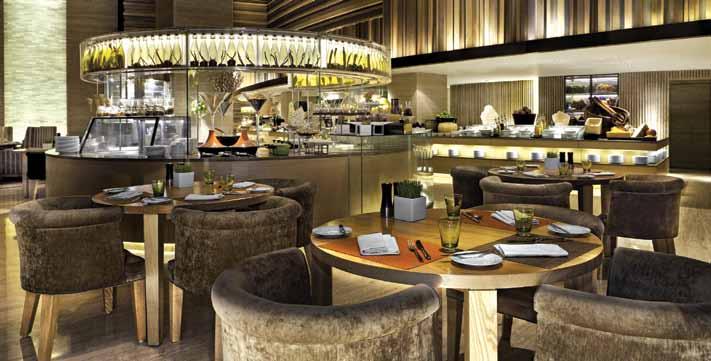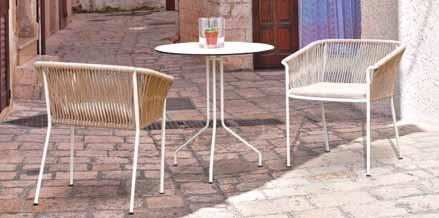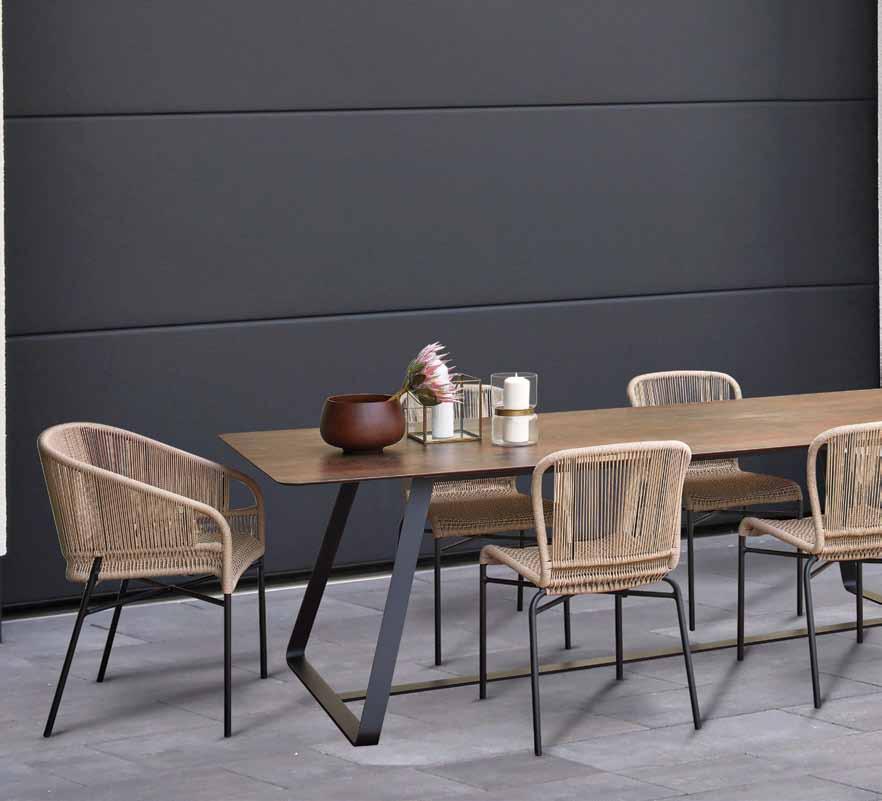
16 minute read
Business
Intricacies of Starting a Restaurant
Globalisation has influenced various aspects of Indian society including the change in food habits. Over last two decades, due to several economic developments, increasing spending power and a willingness to try new diets the F&B industry has seen tremendous growth. This has induced several aspiring entrepreneurs keen on entering this sector. In fact, breaking the stereotypes, several women too have entered – and made a success – in this field. Ashok Malkani examines the pros and cons and discusses the intricacies involved in opening an F&B outlet and running it successfully.
Advertisement
Looking at the escalating restaurant business in India, several entrepreneurs are keenly eyeing this industry for lucrative business. The businessman is further encouraged into entering this industry when he finds several research reports projecting a robust growth of the industry. The growth has been mainly due to the growing urbanisation and the rapidly surging millennial population.
But before venturing into the industry one must make a thorough study of the pros and cons. One cannot become a successful restaurateur if one does not make a deep study of all elements which go into the success of a restaurant.
So what should be the aspects one should consider before venturing into the field?
Jaasjyot Surri, CEO & Co-Founder, SJI Hospitality Private Limited states, “The planning of an F&B outlet is a balance between passion and economics. Factors ranging from geographical aspects such as location, spending capacity, the type of cuisine prevalent in the area, as well as the cuisine and business segment having a lacuna in the market, should be entrepreneur’s major factors for opening an outlet. Besides, this I believe that it is essential to have an operations team and Executive Chef in mind who is roped in early on during project inception to ensure a synergized approach and positive outcome.”
Parthiv Neotia, Managing Director Ambuja Neotia Hospitality, avers, “As the popular adage goes, “In the restaurant business, you earn through fulfilling people’s appetites, needs, and dreams.” That is a mantra one needs to stick to when in the F&B business.
“You need to be very clear about the
concept and branding of your outlet. From the format (QSR to fine-dine) to the target patrons to the price point and the vibe and feel of the outlet, everything should be crystal clear before opening an F&B outlet. It is necessary to spend some quality time and money on developing your concept. A good team is a must to run the business. Make no compromise on selecting the right kind of kitchen, service and management staff.
“Of course, the importance of location and menu cannot be emphasized enough. In fact, if you don’t have anything else, at least you need to get these two areas sorted.
“Not just F&B business, but for any business, an effective and feasible financial planning is crucial. Take into account all sorts of expenditure and investment — including overhead costs — before rolling the ball. Minute details including sales projection, staff positioning, profit-and-loss and break-even calculations should be thought through well in advance. Factor in some money for marketing and PR activities as well.
“Permits and licenses are sacrosanct. From local municipal trade license and FSSAI license to GST registration, tax license and liquor license — make sure you are on a sound footing when it comes to the legalities.
“Often, there is a tendency of first-time entrepreneurs to overlook or pay less attention to suppliers and vendors. They are a vital resource for a successful business.
“Last, but not the least, remain updated about your competition and industry trends. Be not just aware of your competition but also do thorough research on them.”
Kaushal Shah, owner, Vice, Global Tapas Bar, outlines the requisites for starting an F&B outlet as: “Good location, legit legal property High Capex, initial 6 months of working capital.” He reminds the entrepreneurs, “All licenses take 3 months to be approved and received, so one must make proper plans”


Locale and Cost One of the main factors to be considered for the success of an outlet is the location. Besides the locale, the cost of operation too has to be taking into consideration.
Parthiv states, “Ideally, one should consider the cost of real estate rent and also operational cost for having an F&B outlet in a particular location. It has been observed on many instances, that a business had to shut shop only because it had not taken the recurring property maintenance and rental costs into the financial planning.
“It is important to make plans to sustain the property cost way beyond the break-even time period.”
Jaasjyot is of the opinion that the real estate is of prime importance, especially in metros and tier I cities. He avers, “The viability of a project is dependent on the cost of real estate. The location helps decide on the target audience, the spending capacity of patrons, the type of cuisine, the format of the F&B outlet whether QSR, dine-in, takeaway etc. The return on investment and the success or failure of an F&B outlet are highly dependent on property costs, which is a reason we see a lot of outlets opting for the revenue share model with real estate owners more than ever before.”
Kaushal feels that both, location and cost of operation are equally important.
Type of Venture Different restaurant concepts – like QSR, casual dining, fine


dining – it is believed, have different profit margins. Which type of venture would be considered to be more viable for a new comer? Often people are also in a quandary whether to start an eating-out place or a pub bar.
Parthiv states, “The type of restaurant an individual wants to start would depend on the concept and finances. As a beginner, if you are not too confident about your concept, it is advisable to test the waters with something smaller in scale such as a QSR or a no-frill casual setup. More importantly, the type of venture should be primarily dictated by the kind of experience you want your patrons to have. There is no one-formula-fits-all solution to this.
“If you are taking up a franchise, then the format must subscribe to the brand’s existing requirement.
“As far as selecting between an eating out place and a pub bar is concerned, I would say that both have their own challenges and needs. Both options are viable but are completely different in operations and experience. Pubs have the benefit of liquor but also have the nuances, cost and compliance of having and maintaining the liquor license.
“Again, the focus and concern of an F&B entrepreneur should be in creating happiness for its loyal patrons and target customers. That done, anything can sell. The core belief with which our group, Ambuja Neotia Hospitality, operates is that we need to add value to the customer’s expectations, for which we need to constantly be on our toes to make sure we deliver more than what is expected.”
Jaasjyot states, “The viability for a newcomer restaurant is highly dependent on the F&B background and/or professional training of the entrepreneur. A venture which has a great concept and theme to the place, with an interesting vibe will be a good starting point for a newcomer, especially if he or she has a good operations team to look into the nuances of the business and smoothen the learning curve. Depending on the budget, a delivery-only model is a good starting point for someone wanting to test waters without heavy investment. For those with a risk appetite, a kitchen and bar are a viable option.
“The selection between starting a restaurant or a bar is highly dependent on the restaurateur, the chef and the location. In cases where there is a large youth audience, a bar is usually a good fit. In cases where there are residences and offices nearby, a dine-in restaurant makes for a suitable choice. The choice between a restaurant or a bar shall always be based more on internal dynamics such as the team, their strength, the food quantity etc. rather than letting the demographics of the location solely decide that, since a good outlet of any kind will always do well in any locale and will carve out a niche for itself over a period of time.”
Kaushal feels that a new comer should start with a small cafe or a QSR. He adds, “As far as making a selection between an eating out place and pub bar is concerned, I would say that it depends on how passionate one is and the time and money they are willing to invest. Personally I advise if anyone aspires to open an eating out place or a pub bar they need to be completely present and involved in it; else I would advise against it “
Expenses and Period for Break Even Different categories of F&B outlets would require different areas. A new entrepreneur is keen to know the ideal area for each type and what would be the financial investment? He would also like to know the break-even tenure.
Jaasjyot avers, “The area required for restaurants is dependent both on the model as well as the number of persons we look to cater. A QSR would be a good fit in about 300 sq. Ft. of space, where as a casual or a fine-dine restaurant would need just a kitchen larger than that size. The seating capacity is of importance in a fine-dine, which often ranges in the 50+ seater segment. A fine-dining restaurant with a 100-seater capacity would be in the range of about 2500 sq. ft. whereas a casual dining would be accommodated in about 75% of the area.”
He continues, “For a city like Mumbai, the investment for a QSR or a takeaway kitchen would typically be within a budget of Rs.25 lakhs, whereas for fine-dining restaurants and bars, just the kitchen equipment alone could breach this figure. The interiors and ambience for dine-in restaurants could



cost anywhere from a few lakhs to crores depending on the scale of operations and the locality. It is important to work with a break-even horizon of about 3 years, while highly successful outlets are even able to do so in a year or so, more often seen in cases where the brands have been established.”
Parthiv states, “While there is no rule etched in stone for the size of a restaurant, the usual industry success stories hint at the privilege of space in driving business for any F&B outlet. Having said that, one must remember that it is more about the experience that you create for your patron at your outlet — enveloping everything from the food and beverage to services, ambience and amenities — that decides your success and not just the area.”
He adds, “There is no particular thumb rule about the finance that would be need for a restaurant. The minimum money one needs to start a restaurant depends on the kind of menu (cost of ingredients and manpower), the location and associated tax and permits (a simple FSSAI license can cost you anything between Rs 5000 to Rs 10,000 while a civic body trade license can put you back by Rs 5000 to even Rs 1 lakh depending on the city and the neighbourhood), the technology you are using (a sound POS software can have a considerable installation as well as recurring cost), the basic kitchen infrastructure (costs vary from a simple refrigerator to a state-of-the-art cold storage, hence you get the drift) and the real estate investment (including interior design and tableware). The capital expenditure can range from a minimum of Rs 3 to 5 lakhs for a QSR outlet to as much as a few crores for a restaurant.
“To break even, the payback period also varies with the formats and can range from 6 months to 2 years.”
Kaushal is extremely precise about the cost of different types of properties. He avers, “for a QSR one would need an investment of Rs. 20-35 lakhs, Casual dine – Rs. 1-1.25 cores and Fine dine- Rs. 2.5 - 5 crores
“Break-even time would be anywhere between 18 months to 3 years depending on how well it does.”
He adds, ““QSRs typically need crowded busy areas mostly around markets and corporate. Casual dining restaurants are mostly in residential areas whereas fine dining would do good business in malls, business hubs or as stand-alone in some posh localities “ Technology in F&B Outlets In this modern age, market forces necessitate the usage of technologies in the F&B establishments to help them seek efficiencies and achieve agility in their processes. As we move further in the digital era, more technological innovations are emerging to shape the future of the F&B industry. What would one advise a new entrepreneur?
Parthiv vacillates, “When there’s this genie called technology waiting to serve you better and make life and business easier, why not use it? Running a restaurant becomes so much easier, streamlined and hassle-free with new-age Point of Sale (POS) softwares suited and tailor-made for
Kaushal Shah
Jaasjyot Surri
Parthiv Neotia
your business model.
“It helps from inventory management to customer relationship management and indepth analytics that can help in determining actionable insights can significantly simplify and improve the running of a restaurant.”
Kaushal is cautious. He says “Technology definitely is very helpful but not mandatory for a new entrepreneur. Most important is the point of sales system and software you get as then all your data and your operation depends on it. Nowadays you can use tabs to punch in the orders which shoots orders to the kitchen through a connected printer, reducing the time and labour for one having to manually write the order and then place it in the kitchen or bar.”
Jaasjyot too is of a similar view. He says, “Technology is not essential to start a restaurant, but is highly recommended. In today’s day and age, smaller setups or outlets with smaller scale of operations at multiple locations can access cloud-based IT solutions whereas the larger setups can use conventional LAN or server-based technologies. The cost-effectiveness, ease of operations and data mining available with Restaurant ERPs is phenomenal and a great step towards making the entire sector more organized. The decision making can be driven by data rather than by intuition and assumptions. The data available through various technologies can help know the top selling and least selling dishes, the busy and slack timings, the dependency on deliveries or online portals for reservations. The information can be used to send targeted messages to consumers, create patronage, decide menu updates and manage restaurants efficiently without being at the outlet 24x7.
Effect of Online Delivery Portals Online food delivery platforms like Uber Eats, Swiggy, Zomato, etc are expanding choice and convenience for customers to order from a wide array of restaurants with a single tap of their mobile phone. The concept of food delivery has become a common one in India. It would seem like “dining out” is giving way to “eating in”.
So what does a new entrepreneur do? Is there a scope for dine in restaurants?
Kaushal states, “There are always people who want to get out and eat and I experience the place view service etc so there is always going to be scope. However with delivery portals entering the field it has made it easier for the ones who cannot move out but would love to eat from their
favourite place to just place a call and have it delivered to them.”
He adds, “One must realise that from opening a restaurant to running one is a challenging task. The major challenges are first and foremost to find a good clean legit property. If you have that as well as the Capex and the required time, have a go!
Jaasjyot maintains, “The target audience of online delivery portals and dine-in restaurants overlap to some extent. However, they don’t seem to eat into each other’s market. There will always be demand for dine-in locations and guests patronize such places for ambience, freshness of food, service quality, memories associated with certain places and the entire goingout experience and social gatherings which have their own importance in today’s urban lifestyle. The kind of patronage depends on the vibe as well as positioning of the restaurant – cafes often see college-goers and middle-aged crowd, family audiences are often seen at casual and fine-dining outlets and office goers have lunch at outlets that have set meals, quick service or convenient locations.
“Finally I would like to say that setting up a restaurant, on the whole, is a challenging business, just like anything else in the service industry. Consistency of food, hospitality, liasoning, training of staff, hiring and maintaining acceptable attrition rates of staff, manpower management and ensuring freshness and newness to the outlets from time to time make it a challenging and dynamic business.”
He adds, “Food is, and will always be, of paramount importance to the F&B industry. The real-estate cost is a pain point and the move towards the revenue share model or establishments purchasing premises and then commencing operations is a step in the right direction. Loyalty programs and rewards are a great way to engage customers and build a credible long-term audience. It is essential to be on-board with various online portals for the purpose of visibility but it is important not to be dependent on portals and deep-discounting. A good product at any location can be a success, if served at the right price point with a smile!”
Parthiv elaborates, “2019 has witnessed ample disruption in the F&B industry with both online delivery and deep discounting gaining substantial traction with netizens/millennials.
“As global trends are emerging, such disruption created by players like Uber Eats and Swiggy is creating significant changes in the approach to the business dynamics. The concept of a restaurant from being a luxury segment has become more of a commodity. Such a shift in the business ecology calls for the business model to evolve with it.
“Moreover, deep discounting has been another moot point in dine-out landscape, leading restaurants to move out of the luxury segment in order to remain viable. However, from a simple takeaway to a casual dining hangout or a luxury finedine destination — the scope of each kind of outlet could be optimized if the respective business models are updated and upgraded in order to integrate the new players. The idea is to allow integration, not resistance.”
He cautions, “Some of the core challenges that an entrepreneur, in her/his early days, might overlook, before starting the business, include marketing techniques, identifying and establishing healthy relationship with suppliers and vendors, training and retaining the staff, and sustaining customer interest to ensure repeat visits and attracting new patrons in an environment where something new is coming up every other day.”
n









